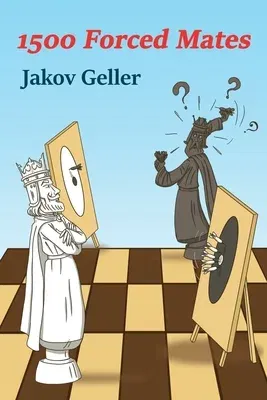Jakov Geller, born in Moscow in 1986, achieved the grandmaster title in
2011. Jakov has been one of Russia's top modern coaches since 2007 and
his pupils have included grandmasters Ivan Bukavshin and Alexandr
Predke, international masters Darsen Sanzhaev, Alexey Mokshanov and
Rudik Makarian, and WIM Dinara Dordzhieva. The Russian team that Jakov
coached in 2009 took first place in the U16 Olympiad. He was named
Children's Trainer of the Year in 2010 by the Russian Chess Federation.
Jakov has won prizes in over 20 Russian and international tournaments.
His new book focuses on a key element of tactics: forced mate. It
contains 1500 positions rife with tactical resources; 1380 of them are
presented as puzzles. The book is divided into 31 chapters, most of
which are dedicated to a single tactical method, which is described in
detail. This fundamental work systematizes the methods for delivering
forced mate, which include sacrifices, pawn promotion, vacation,
attraction, elimination, deflection, blocking, seizing the square,
x-rays, pins, discovered checks, double checks, windmill and
interference. The rest of the chapters are titled Combinations; they are
used to consolidate the provided knowledge and test the acquired skills.
They contain the theoretical basics of the combinations and cases
studied, but to solve these puzzles the reader will also need to use
techniques they studied in previous parts of the book, rather than in
only the current chapter. Therefore, each new tactical method studied
gradually increases the diversity of combinations used in the subsequent
chapters. The puzzles in every chapter also gradually increase in
difficulty. The last chapter makes the book useful even for top-level
players, because it consists solely of difficult puzzles and can be used
as a universal test to check forced mating skills.
The greatest value of this book is in the learning system that can be
used as a foundation for young chess players to study tactics. The
author has used this system countless times when working with his pupils
and it has proved to be highly successful. Together with the carefully
crafted examples it turns this work into a universal textbook that can
be used by both students and coaches.
This book is accessible to beginners once they have learned to mate in
one, and contains puzzles with mostly 2-move to 6-move solutions.
Puzzles in the final chapter will challenge even grandmasters, with
solutions often requiring 9-11 moves.

